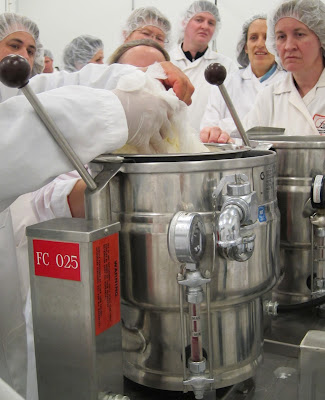Life, Love, and Art in Venice
The Palazzo Venier was an unfinished building (only the basement and the first floor were completed) that threatened to tumble into ruins more than once over the centuries. But it had a spectacular setting with a large terrace overlooking the Grand Canal.
Luisa Casati, a wealthy Italian woman, purchased the palazzo around 1910 to use as a base for her summer parties. The author speculates that Luisa may have had Asperger’s. All we know for sure is that she was a woman who liked to strike a pose, wearing elaborate costumes and trailing around Venice with her black panther, male servant, and a snake coiled around her neck. She loved to hold elaborate parties that were stage sets more than social get-togethers. On one occasion she was given permission to hold an event in the Piazza San Marco.
“To the accompaniment of a distant melody, played by a small band on an approaching gondolier, the guests were directed from the waterfront jetty to a roped-off section of the square. Their path was lit by dozens of candelabra, held up by a hired retinue of staff who, according to some eyewitnesses, were all black, and all identically outfitted in 18th-century uniforms cut from Fortuny’s rarest velvet. . . . [Luisa] processed into the piazza, heralded by flag-bearers and trumpeters, by falconers with trained birds held ceremonially on their wrists.”
Luisa’s acquaintances included a great many artists and she acquired a large collection of self-portraits by the likes of Augustus John and Man Ray. She outlived her fortune and her fame, ending her life in relative poverty and anonymity.
Doris Castlerosse, born into a well-to-do but middle-class British family, had much higher aspirations. Her path to wealth and fame was through a series of male lovers who provided her with homes, jewellery, and money. Like Luisa, she had many artistic friends, including Cecil Beaton and Noel Coward, as well as a close relationship with Winston Churchill. Venice has always been popular with foreigners who appreciated its acceptance of hedonistic, dissolute behaviour. It was one of Luisa’s lovers who would purchase the Palazzo Venier, giving her a stage where she could hold court. Unfortunately, her installation at the palazzo coincided with the alliance between Mussolini and Hitler and increasing tensions prior to World War II. Her reign in Venice was short-lived and she would die in 1942.
Venice had been a refuge for Peggy Guggenheim long before she purchased the Venier palace in 1948. “She was entranced by the quality of ‘floatingness’ that seemed to pervade its every aspect: it was a city ‘sprung from the sea’, she wrote, where ‘no time exists’. And like so many before her, she’d fantasized about finding a refuge there, imagining it as a world away from the conflict and noise of modern life, and from her own private difficulties.”
Like Luisa and Doris, an independent income allowed Peggy to travel restlessly in Europe, drinking, forming attachments, and financially supporting writers and artists. She was in Paris when World War II broke out. While others chose to leave as quickly as possible, she remained until the Germans were on Paris’ doorstep, resolving to buy one piece of modern art a day. Artists were desperate to sell, especially as the Germans didn’t approve of modern art, and Peggy was able to amass an amazing collection. Once in New York, she continued to support artists and opened a modern art gallery to significant acclaim. Once she purchased the palazzo, it would become both home and gallery and it is thanks to Peggy that it is now a permanent gallery.
Reading The Unfinished Palazzo is liking eavesdropping on the rich and famous. For a moment, I longed to have their abundant wealth and their apparently abundant self-confidence and poise. But only for a moment. It would be like eating triple-layer chocolate cake for breakfast every day of the year. It would fast become stale and sickly.
None of these women had a permanent home. Peggy, who loved to walked the streets of Venice, came closest to putting down roots, but for all three women Venice was a summer home and they spent most of their time there entertaining friends and other visitors to Venice. One could envy them their independence from earning a living, but it left all three of them searching for meaning in their lives. Their apparent self-confidence was a façade, camouflaging but not totally hiding their fears and insecurities. Even Peggy, who had accomplished so much in the art world, established a person as ‘l’ultima dogaressa’. She liked to float around in Venice in her custom-built gondola, accompanied by several of her dogs, and wearing “outsized sunglasses shaped like jazzy butterfly wings that she’d had designed for her by the painter Edward Melcarth”.
All things considered, I admire these women who lived their lives with passion and intensity – what more can any of us hope to achieve?





Comments